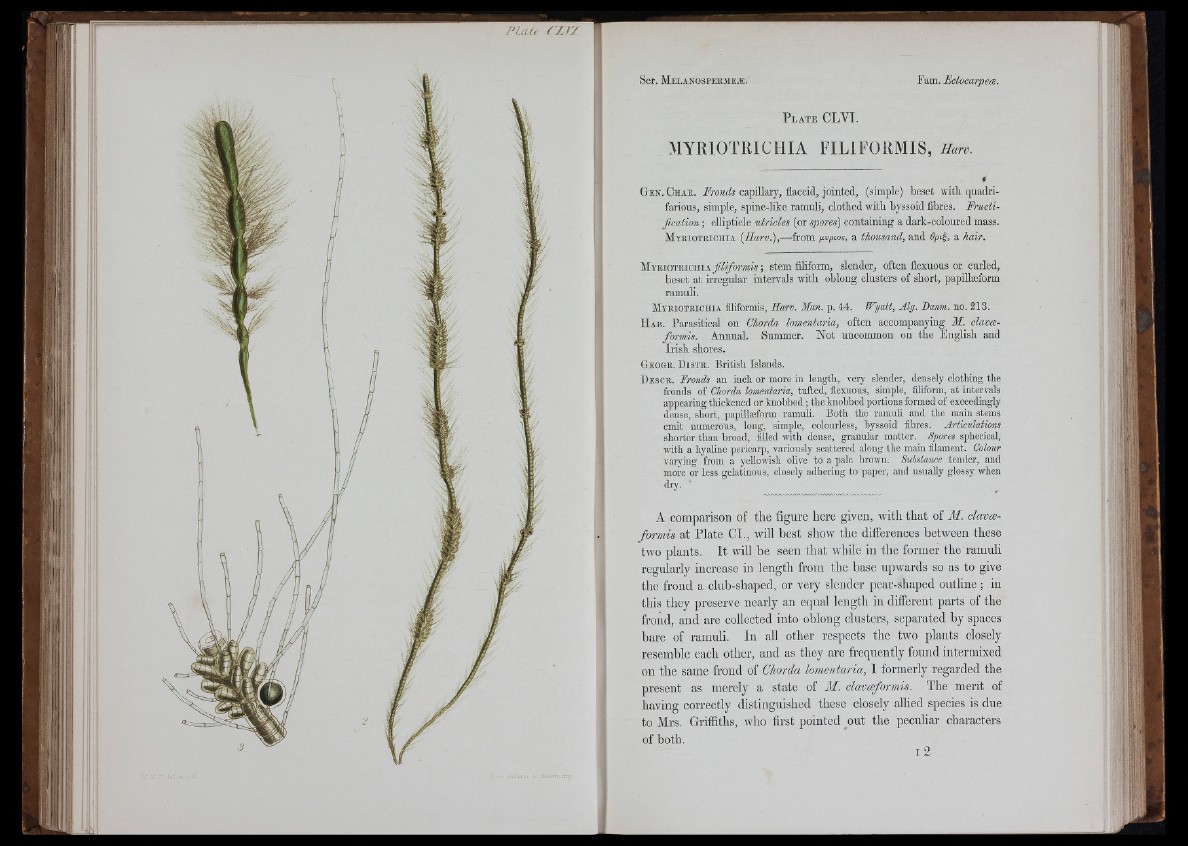
P L a u r / j y
P l a t e CLVI.
MYRIOTRICHIA FILIFORMIS, Harv.
G e n . Ch a e . Fronds capillary, flaccid, jointed, (simple) beset with quadri-
farions, simple, spine-like ramuli, clothed with byssoid fibres. Fructi-
j k a t io n ; eUiptiole utricles (or spores) containing a dark-coloured mass.
M y e io tr ic h ia [R arv .),— from gvpios, a thousand, and 6pfi, a hair.
MYiaoTUicmx fili/o rm is; stem filiform, slender, often flexuous or curled,
beset at irregular intervals with oblong clusters of short, papfllseform
ramuli.
Myr io t eich ia filiformis, Ilarv. Man. p. 44. Wyatt, Alg. Lanm. no. 213.
H ab. Parasitical on Chorda lomentaria, often accompanying i f . clava-
fo rm is . Annual. Summer. N o t uncommon on the E nglish and
Irish shores.
Geoge . D is t e . British Islands.
D e sc e . Fronds an inch or more in length, very slender, densely clothing the
fronds of Chorda lomentaria, tufted, flexuous, simple, filiform, at intervals
appearing thickened or knobbed; the knobbed portions formed of exceedingly
dense, short, papiUaeform ramuli. Both the ramuh and the main stems
emit numerous,' long, simple, colourless, byssoid fibres. Articulations
shorter than broad, tilled with dense, granular matter. Spores spherical,
with a hyaline pericarp, variously scattered along the main filament. Colour
varying from a yellowish olive to a pale brown. Substance tender, and
more or less gelatinous, closely adhering to paper, and usually glossy when
dry.
A comparison of the figure here given, with that of M. clavm-
formis at Plate CL, will best show the difl'erences between these
two plants. It will be seen that while in the former the ramuli
regularly increase in length from the base upwards so as to give
the frond a club-shaped, or very slender pear-shaped outline ; in
this they preserve nearly an equal length in different parts of the
frond, and are collected into oblong clusters, separated by spaces
bare of ramuli. In all other respects the two plants closely
resemble each other, and as they are frequently found intermixed
on the same frond of Chorda lomentaria, 1 formerly regarded the
present as merely a state of M. clavmformis. The merit of
having correctly distinguished these closely allied species is due
to Mrs. Griffiths, who first pointed out the peculiar characters
of both.